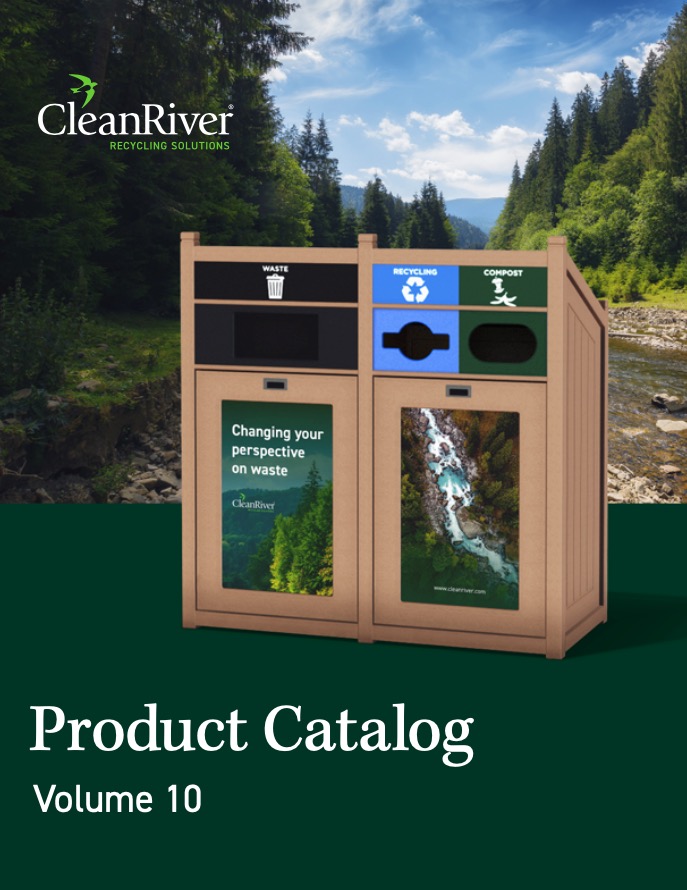Share
Whether you’re planning an outdoor recycling program for your school yard, athletic field, zoo, park, office building or any other facility, here are CleanRiver’s top tips to help you identify what features to look for and factors to consider to get the best outdoor recycling bins for the job.
1. Get The Right Outdoor Recycling Bins For Your Climate
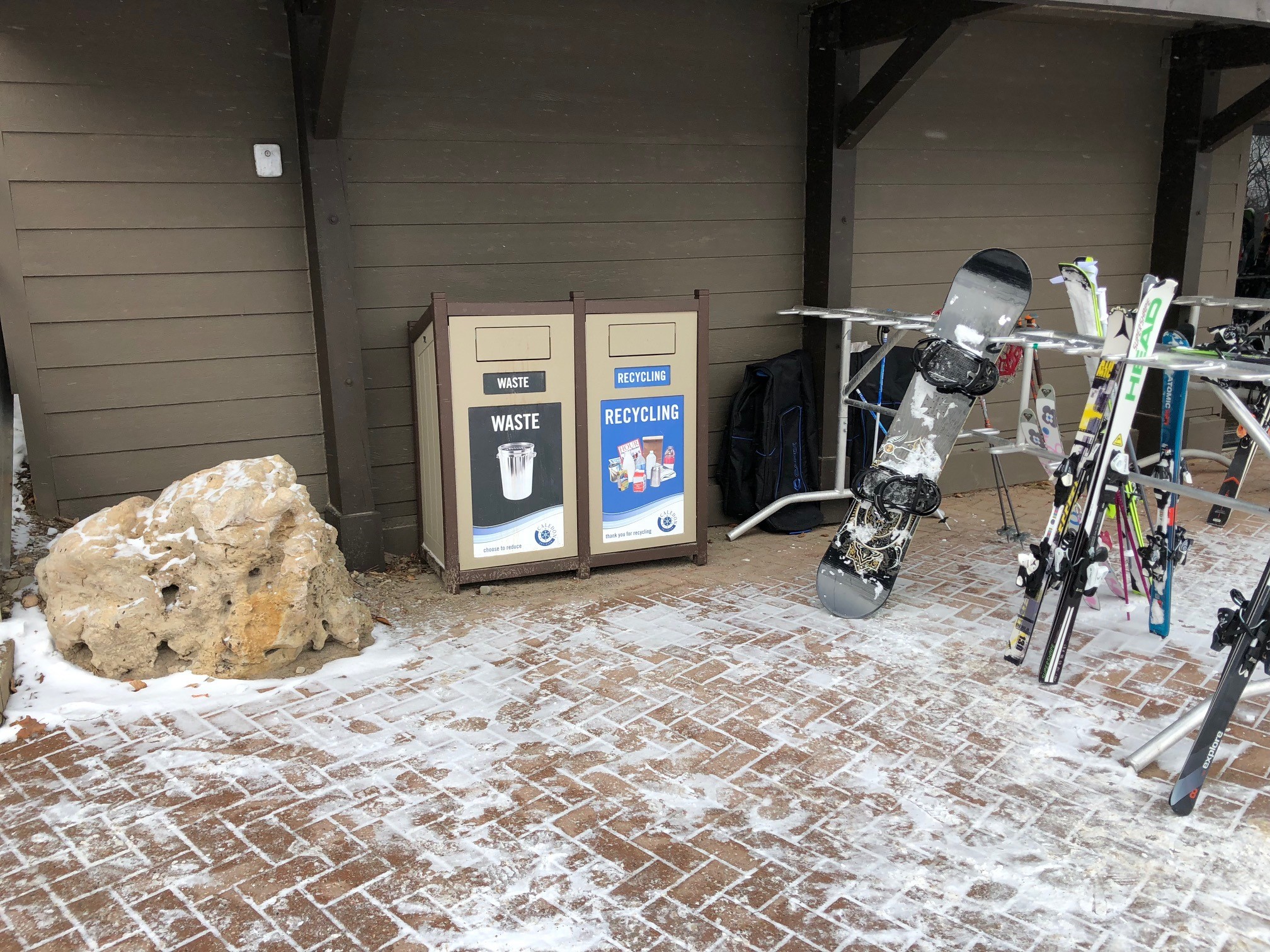
CleanRiver Outdoor Recycling Bins at Caledon Ski Club.
One of the most important factors to consider when you’re planning an outdoor recycling program is the climate. It’s likely that your outdoor bins need to be able to withstand the weather all year round no matter what the conditions. From harsh Canadian winters to tornado season in the southern States, the durability and safety of your outdoor recycling bins should be a top consideration. Bin accessories, such as anchor kits, are an ideal solution to ensure your bins remain safe and grounded.
If you want to ensure your outdoor recycling bins will stand the test of time, sturdy construction is key. There are many different material options available including various wood laminates, steel and plastic, but when it comes to the outdoors CleanRiver has found that you just can’t beat HDPE! Our outdoor recycling bins are manufactured out of recycled HDPE material which doesn’t rot, is impervious to insects, is UV stable & weather resistant and waterproof. And the best part? CleanRiver also accepts recycled HDPE bins at the end of life to be recycled into other consumer items and HDPE lumber. It’s a sustainable win win!
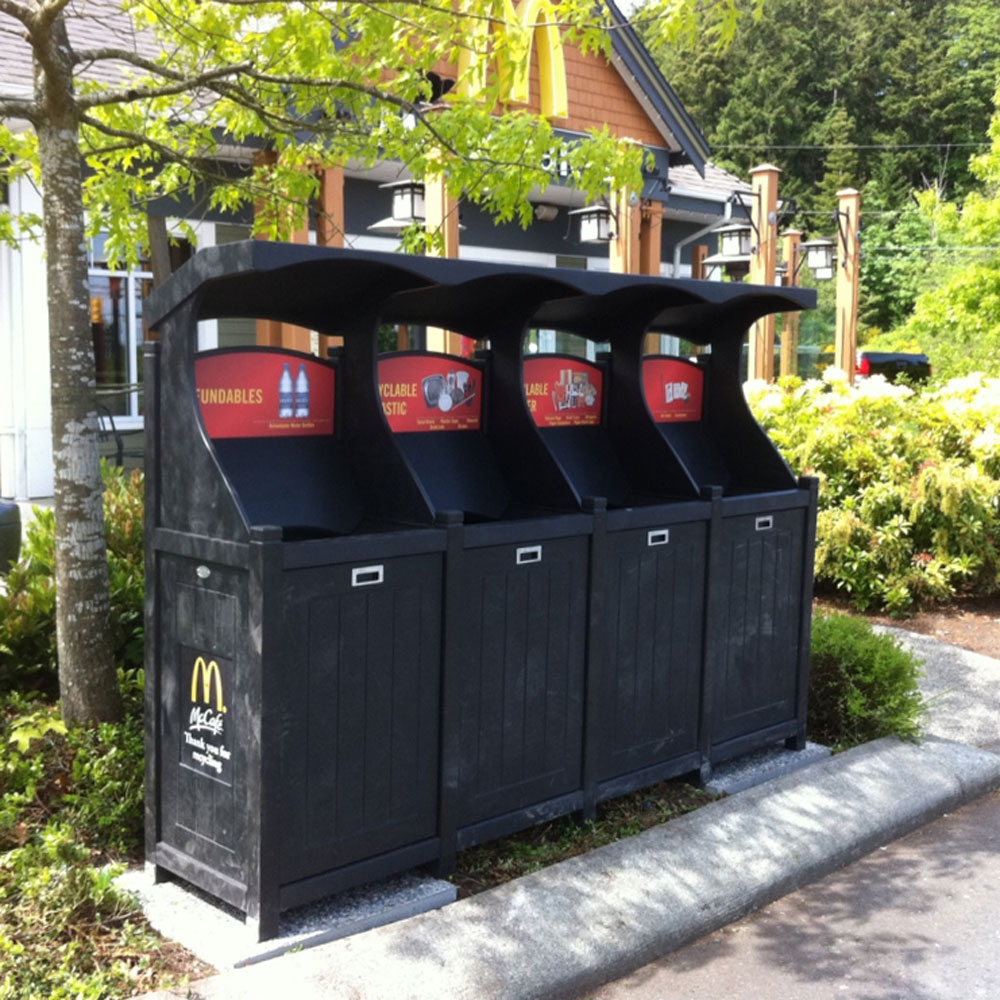
McDonald’s outdoor HDPE recycling bins withstand weather conditions all year round.
2. Prepare Your Bins For All Environmental Risks
When ordering your bins, a key component to avoid recycling failure is your collection stream openings. Of course, size and shape are extremely important aspects to consider when it comes to accommodating items your bin will be collecting, but what about keeping things out?
A long time CleanRiver customer ordered outdoor recycling units with one-way hinged flap doors. One poor lady suffered the consequences early morning when she went to toss her trash in the bin and to her shock had a racoon jump out onto her! Due to the one-way hinged flap openings, the raccoon was able to get in, but wasn’t able to get out until some poor soul was looking to get rid of their trash.

If you’re placing bins outdoors consider all risk factors including the furry ones who just love to get into waste. Make sure your openings either prevent any creatures from getting in and/ or if they do, they are not trapped, resulting in one hungry and angry rodent!
3. Make Sure Your Recycling Bins Are Easy To Spot
Outdoor recycling bins need to be placed in accessible and easy to find places. Be sure to consider the foot traffic in that location and in areas that are likely to be crowded, it’s a good idea to use a recycling bin that is accessible from both sides. Like the Excel Stadium Bin for example which has high visibility central graphics and large openings which help people toss their waste into the right stream as they walk by. It’s accessibility from both sides has proven to be very effective in large and busy crowds.
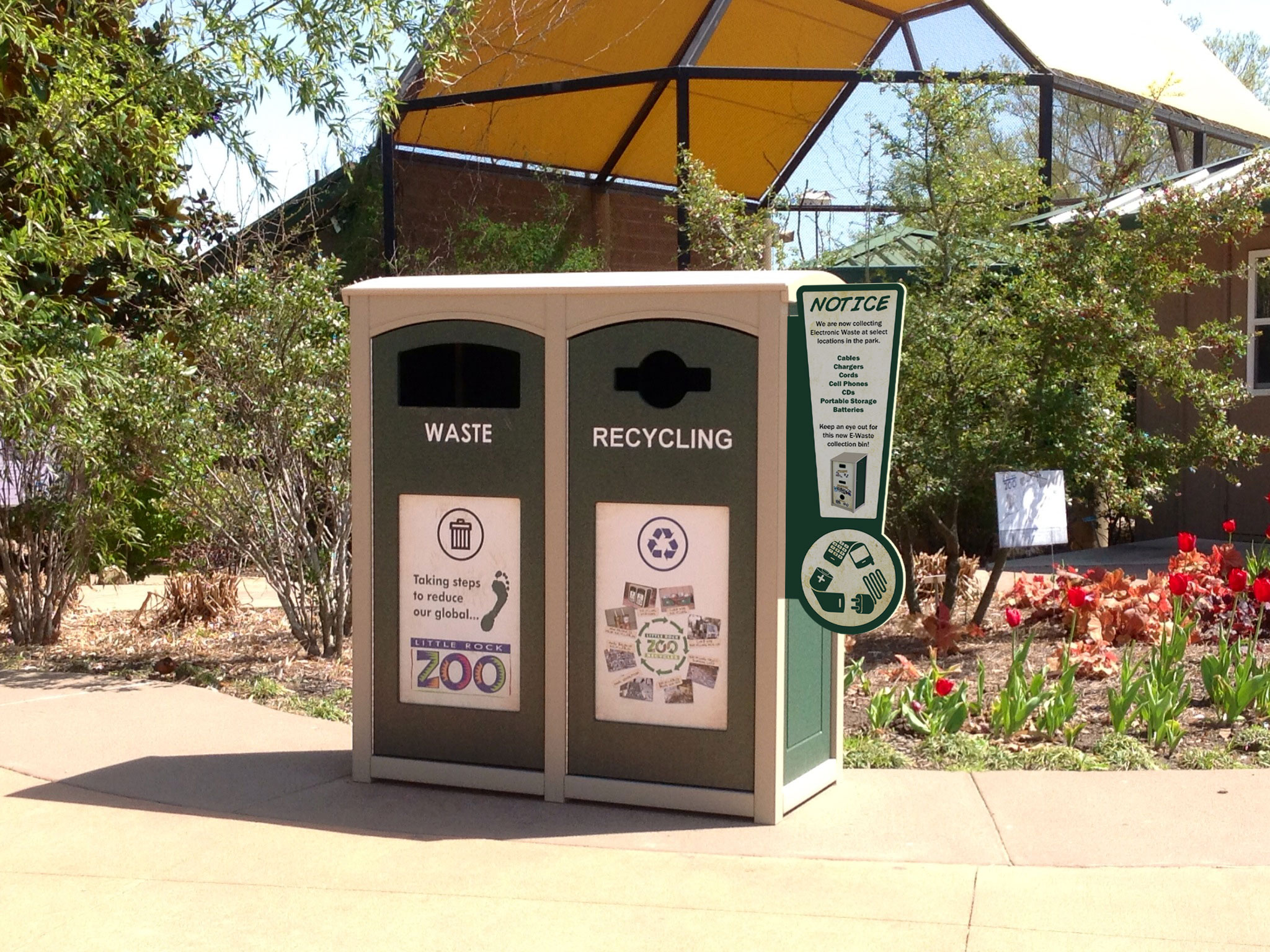
Little Rock Zoo Collects Zoo Maps as a part of it’s recycling program.
Bonus Tip: Amusement parks, zoos, stadiums and outdoor event centres should even consider identifying all waste and recycling stations on maps. This is just another step you can take to support and communicate your outdoor recycling program to staff and guests making it easier for people to do the right thing!
4. Consider The Size And Shape Of Your Bins
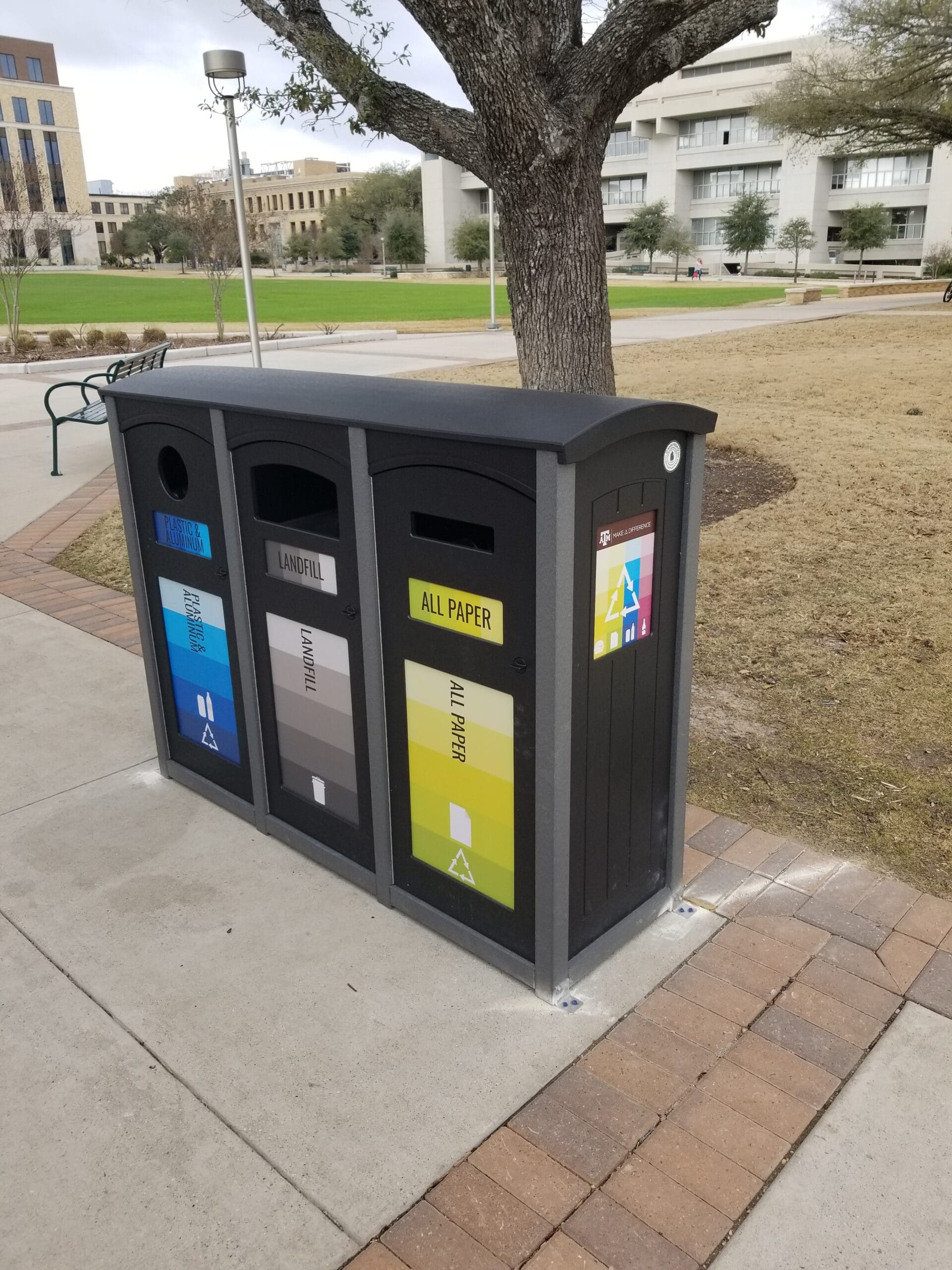
Outdoor CleanRiver Excel Dome Top at Texas A & M Campus
Don’t be fooled, when it comes to recycling bins, size does matter and so does shape. Sure, it sounds great to order some extra-large barrel shaped bins when you are servicing high volumes of people generating lots of waste. But placement of that bin is just as crucial. Take it from one University Campus who made the mistake of ordering this style of bin and then placing them on top of a hill. It only took a few students and a couple of drinks to push the bins over and roll them right down that hill. Luckily that round heavy bin didn’t hurt anyone but the Dean’s car.
When it comes to outdoor recycling bins that are durable and can service high volumes of people, it’s best to get square shaped recycling bins and to also select the add-on option to include weighted bases that prevent the bins from tipping over. There are many different design options available and many of which are much more suitable for campus spaces.
The sturdy Excel Dome Top is an example of an outdoor Bin that can not be easily tipped or moved and is designed with a curved roof which sheds rain and snow. Ideal for educational facilities, malls & streetscapes it has drainage holes inside which prevent buildup of liquid from spills, leaks or weather.
5. Include Guides With Graphics On Your Outdoor Recycling Bins
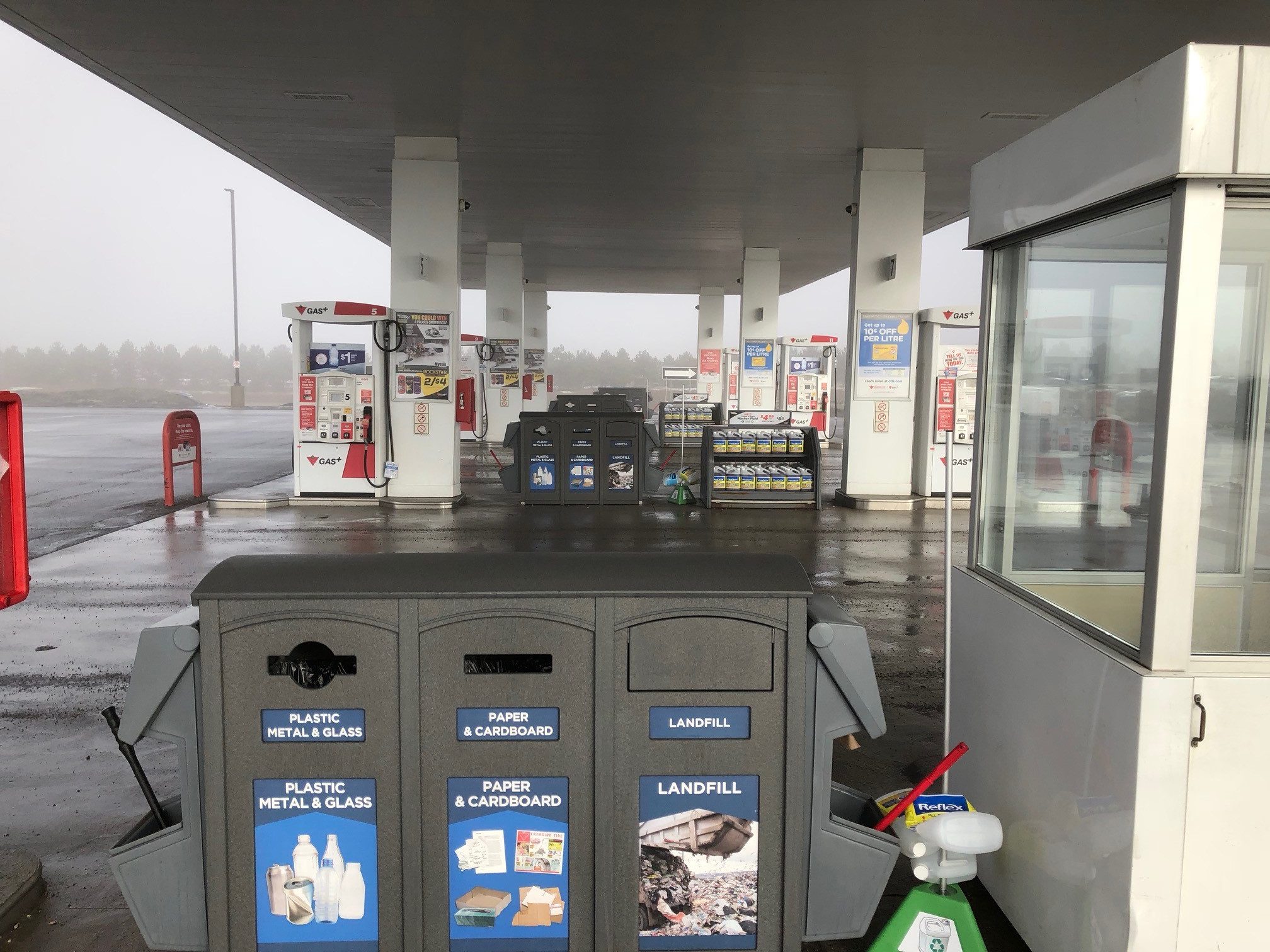
If you want to lower your contamination rate it’s crucial to support your outdoor recycling program with graphics that match as closely as possible to the item in the person’s hand. Outdoor recycling bins NEED to guide users to do the right thing quickly and easily with graphics since people wait only 2-3 seconds before deciding where to toss their waste.
Our advice:
- Graphics must be clear and concise or you run the risk of people dumping their trash in the first bin they see.
- Graphics can help them quickly make the right choice – and boost the success rate of your recycling program – with familiar and consistent graphics.
- Recycling stream graphics need to strike a balance between being too vague or too overwhelming.
- Graphics that show large, full color images of the items and have minimal text produce recycling streams that are cleaner.
- Less is more with respect to the amount of images. This allows people to grasp the program quickly before adding new items which can become more complex in time.
- Take it a step further: Incorporating actual items that are likely to be disposed of in an area, such as a branded cup from a close by coffee shop are very helpful in communicating that those containers are, in fact, compostable and not recyclable or waste.
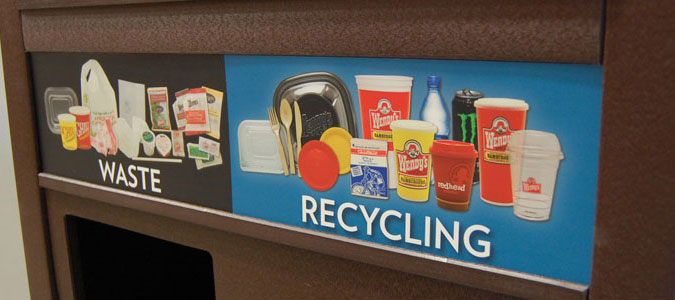
Check out our Guide To Recycling Graphics for more information.
6. Order Recycling Bins With One-Stop Collection
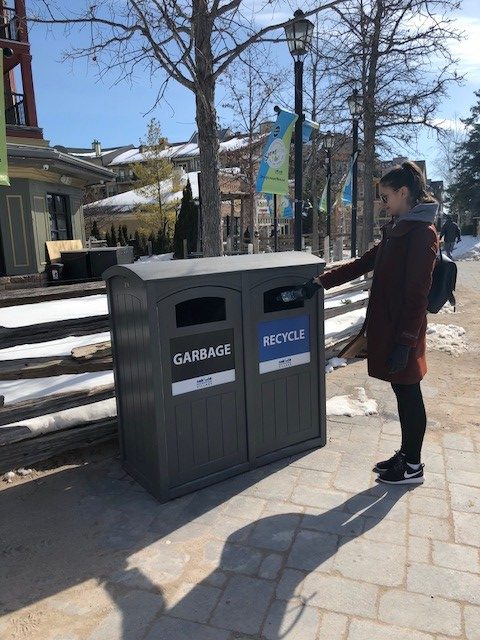
No matter where your outdoor bins are going, they need to accommodate people are on the go. People don’t want to carry their waste with them back inside and want to be able to toss it instantly. If you want your outdoor recycling program to be successful, it is extremely important that you incorporate bins that keep all the waste streams together. When there is no recycling or compost bin directly next to the garbage people just end up tossing their waste in whatever bin is closest. This leads to contamination in your recycling and waste streams which can kill your sustainability goals because recycling will often end up in landfill rather than be properly sorted at the Material Recovery Facilities. That’s why we recommend one-stop collection which helps increase the effective separation of recycling and landfill garbage. So keep your streams together!!
For more tips on buying the right recycling bins for your program, check out our blog 5 Pro Tips For Buying Recycling Bins.
CleanRiver Recycling provides a variety of innovative, flexible and customizable recycling solutions. To determine the right solution to meet your needs, use the CleanRiver product selector.
If you have additional questions that weren’t answered in this blog post please call us at 1-888-646-4246 or email solutions@cleanriver.com.


